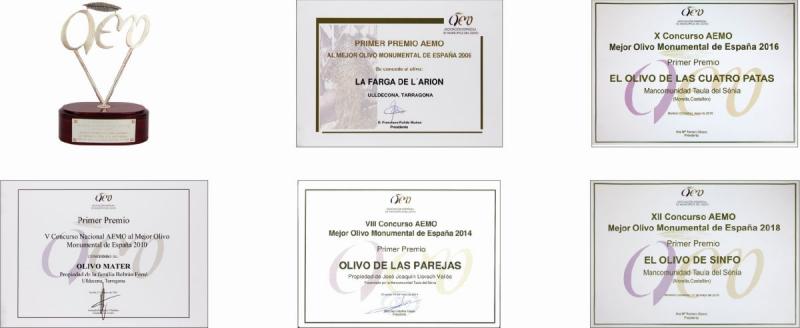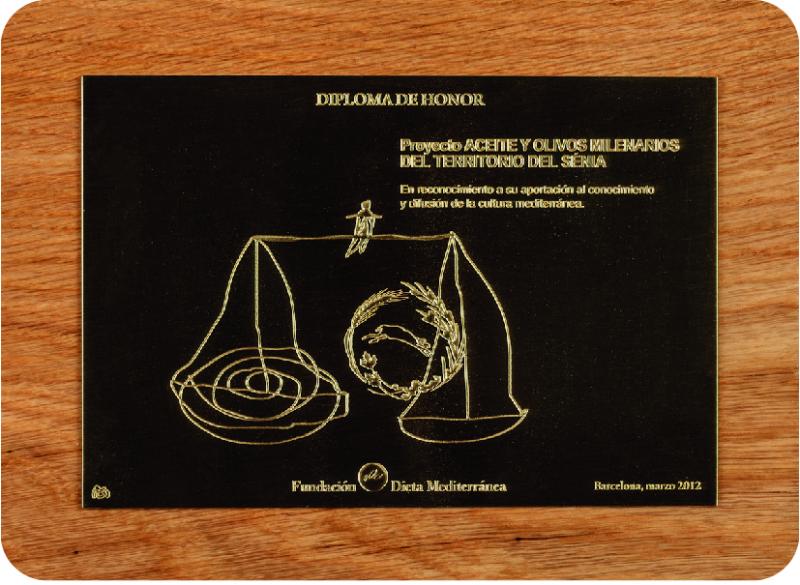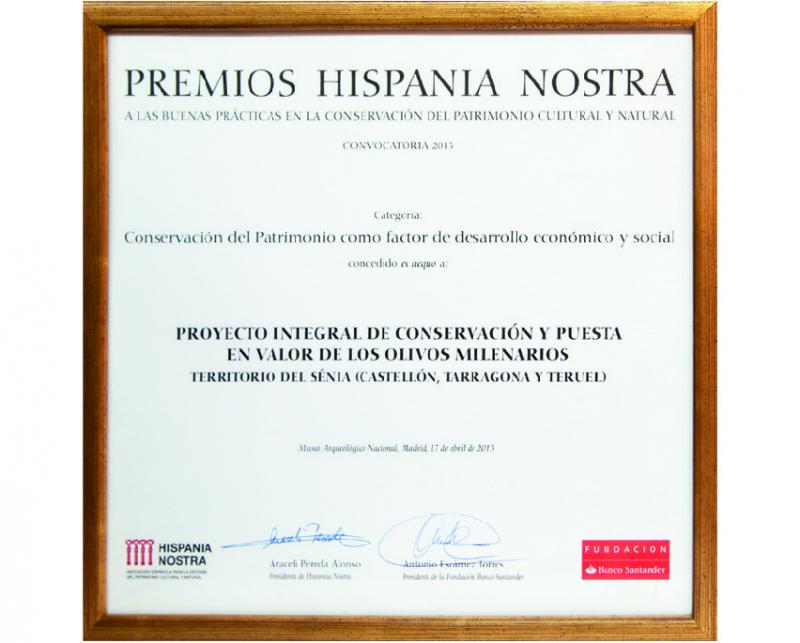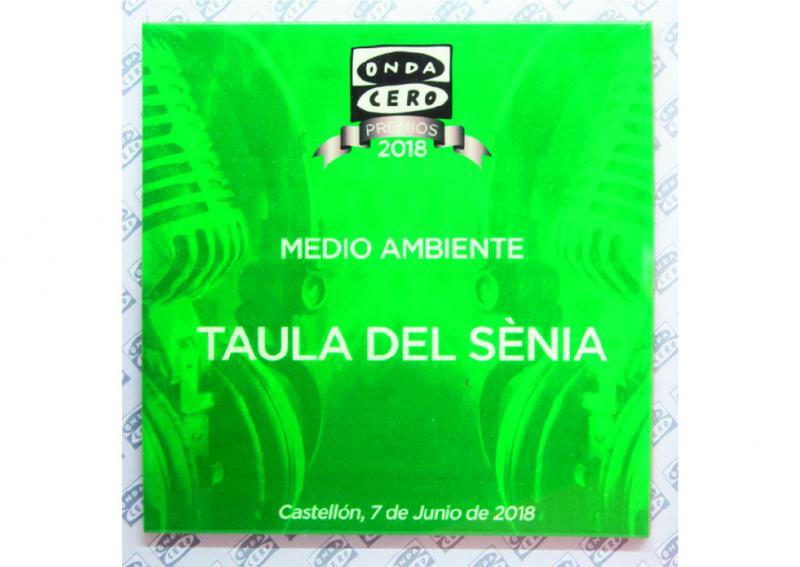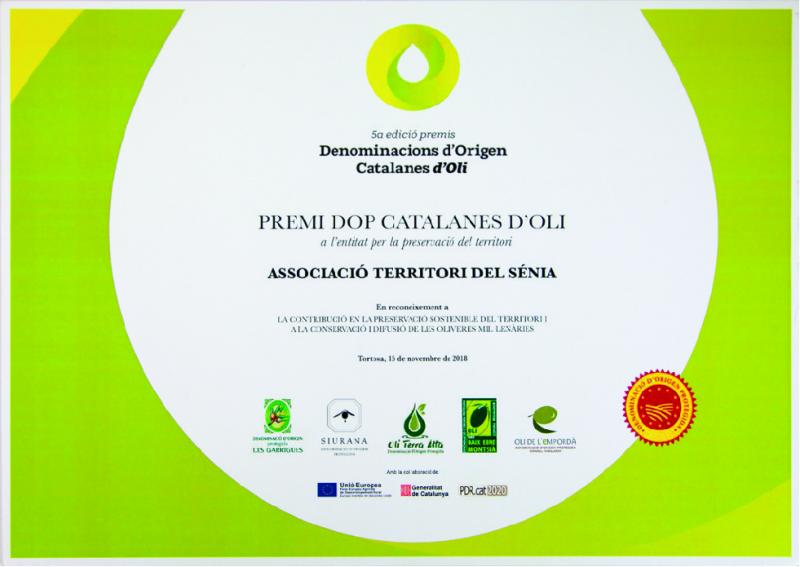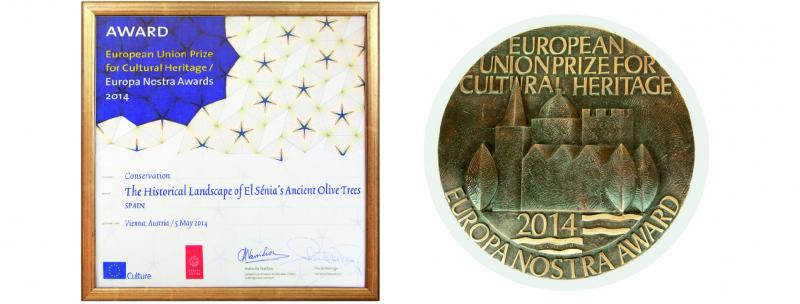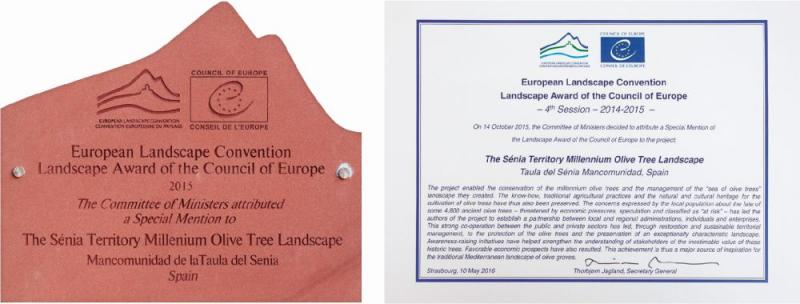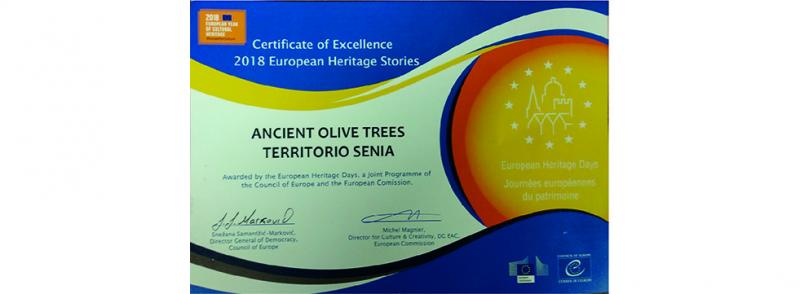Información

Millenary Olive Trees of the Sénia Territory: preservation and valorization
Although the plundering of ancient olive trees had already begun to be talked about at the end of the last century, it was at the beginning of this century when some people and organizations in the area raised the alarm, so that the local community began to show their concern about the sale of this natural, cultural and historical heritage so important for this territory.
Once the Mancomunidad Taula del Sénia and the Sénia Territory Association were created in 2006/07, they took on this concern and decided to start making an inventory of the millenary olive trees to see the magnitude of the extensive natural and cultural heritage that exists.
The criteria adopted to include an olive tree in the inventory was that the trunk measurement at 1.30 m from the ground should be greater than 3.50 m in perimeter, based on the same figure used in the study "Prospection of the monumental olive trees of Andalusia", carried out by C. Muñoz, D. Barranco and L. Rallo, who justified that an olive tree of these dimensions can reach a sufficient age to be considered monumental. The result of the same in all Andalusia gave a figure of 53 specimens (35 olive trees, plus 18 wild olive trees).
The inventory of millenary olive trees in the Sénia Territory (which consists of complete measurements of the tree, its geolocation, a photographic report and observations) was carried out during 2008 and 2009, thanks to various grants but above all thanks to the collaboration of the owners and town councils in the area, resulting in 4,080 olive trees.
The inventory is kept up to date and has grown from 4,080 to 5,767 specimens, plus another 349 within the Marca de Garantía Aceite Farga Milenaria, distributed among l'Alcora, Amposta, Figueroles, Masdenverge and Sant Mateu.
On the other hand, a very detailed analysis of the varieties of the millennial olive trees inventoried by IRTA was carried out in 2010 (Ninot & Romero, 2011). Samples of 1,150 trees were collected and genetic markers were analyzed. The result was that the dominant variety of the inventoried olive trees is 'Farga', which accounts for 96%.
Dating of millenary olive trees Territori Sénia
The age of the olive trees is one of the most significant values of these authentic monuments. Over the years the trees increase in size and especially the thickness of the trunk. It must be taken into account that the size of a tree depends on multiple environmental and genetic factors. The type of variety influences, but also the environmental conditions such as rainfall, sunshine, temperature and the nature of the soil.

-
Nº 1.878, "la Farga de l'Arión" (Ulldecona) was planted in 314 and is 1,708 years old.
-
Nº 2.814, from the movie "El Olivo" (Canet lo Roig) was planted in 527 and is 1,495 years old.
-
Nº 2.767, that is in the Area of (Canet lo Roig) was planted in 569 and is 1,453 years old.
-
Nº 0041, that is in the Area Mas Na Cabanes (Sant Jordi) was planted in 744 and is 1,278 years old.

-
Nº 0117, "la Farga del Pou del Mas" (la Jana) was planted in 833 and is 1,189 years old.
-
Nº 3.841, that is in the Area of (Traiguera) was planted in 971 and is 1,051 years old.
-
Nº 1.493, that is in the Arión's Museum (Ulldecona) was planted in 1,011 and is 1,011 years old.
-
Nº 3.715, that is in the Area of (Godall) was planted in 1,018 and is 1,004 years old.
Preservation and valorization of ancient olive trees
In view of the importance, dimension and concentration (4,080 OM in 2,070 km2) of the Sénia Territory heritage of millenary olive trees, it was decided to work together the public sector (Mancomunitat, City Councils and others) and the private sector (Association: owners, oil mills, restaurants, tourism...) to achieve the first and greatest objective: to conserve and, at the same time, to enhance the value of the Sénia Territory Millenary Olive Trees.
In order to achieve this fundamental objective, several activities have been carried out over the years, with good results.
Awareness of the owners. It has been very important to be able to count on their help and collaboration, especially after having been able to verify that by producing certified oil only from these olive trees and of great quality, they are paid double and also continue to enjoy an exceptional heritage that, when the time comes, they will be able to pass on to their children. The change has been crucial, because before there were difficulties in making the inventory and now it is the owners themselves who ask to go to their land to measure the olive trees.
Improvement of the olive and oil production process. In general, much more quantity was produced than quality. Now, with the advice of the best specialists during the whole process of production, harvesting and transport of the olives, and also in the elaboration, storage and conservation of the oil, the quality of the Sénia Territory oils has improved considerably.
Increase in certified production of millennium olive oil. In 10 years it has grown from 1 to 16 brands and from 300 to 10,000 liters of oil, externally certified and with official analysis and tasting panels. There are a total of 8 Valencian and 8 Catalan brands, which increase every year. Everything works within the Marca de Garantía Aceite Farga Milenaria.
Increased production of oils from traditional varieties. Besides the 'Farga', that of almost all the millenary olive trees, the 'Morruda' and the 'Sevillenca' predominate (which form the D.O. Baix Ebre-Montsià), while in Aragón almost everything is 'Empeltre'. In addition to the extra virgin (uncontrolled coupage), monovarietal oils are produced, which are highly appreciated in the market. And there are plans to produce a controlled coupage (Via Augusta oil) from these oils, which will define the Sénia Territory.
Collaboration agreements with the best restaurants in the area. In exchange for consuming oil from Sénia Territory Millenary Olive Trees, some restaurants make recipes with this oil that are incorporated into their menus and published in gastronomic books. This book is the third one to be published, following positive previous experiences.
Oleotourism: museums, areas and paths of millenary olive trees that are only made after signing agreements with owners, mills and municipalities. The different activities to be carried out and places to visit can be seen in this web site in the sections What to see y What to do.
Protection and enhancement of the olive trees
For centuries, many of these trees were uprooted by their owners, either to make firewood, to sell the wood or to replace them with younger trees. The owners of abandoned olive trees did not get any return from the land and, therefore, the option they saw was to sell these trees for their timber.
In the 1990s, this process of uprooting these trees accelerated even further and even extended to olive trees in production. Owners were offered large sums of money to get rid of their most monumental olive trees, which were sold as decorative trees. The low price of oil and the lack of subsidies made the sale of olive trees a quick economic source of profit, sometimes accompanied by a change of cultivation from rainfed to irrigated, with more economic profitability.
Faced with the plundering of ancient olive trees caused over the years, it became necessary to protect them to ensure the conservation of these olive trees. Just as there are laws for the defense and protection of historical, cultural and architectural heritage, laws for the protection of monumental olive trees are necessary, where protection is contemplated but also aid, both to the owners who cultivate them and to the processors of their oils.
Given the distribution of competences in Spain, it is up to the Autonomous Communities to legislate in this area.
In the Valencian Community, after the Tree Protection Law was passed in 2006, in 2018 its regulations were published, which set the protection of all olive trees with a trunk perimeter of more than 3.50 m at a height of 1.30 m from the ground, in response to what we had requested in the Law's Monitoring Commission.
While in Catalonia,a draft law was presented to the Parliament in 2018 which, after a long parliamentary procedure (with appearances in the report and presentation of consensual amendments by us), in June 2020 was approved by 122 votes in favor, 0 against and 12 abstentions, Law 6/2020 on the protection, conservation and enhancement of monumental olive and olive groves, which, in addition to protecting this unique heritage, guarantees aid to owners, companies, associations and local bodies working for the same purpose.
Ambassadors
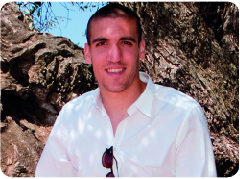
Oriol Romeu
Soccer Player

Juan Echanove
Actor

Federico Mayor
General Director UNESCO

María Galiana
Actress

Pepa Fernández
Journalist

Vicente del Bosque
Soccer coach

Paco Zapater
Lawyer
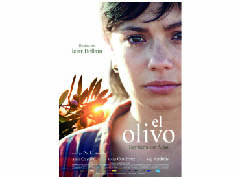
Película El Olivo
Partnership
Awards
